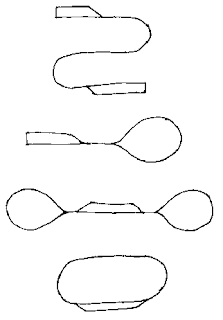Feel a bit embarrassed asking this....
In a semi-prototypical short-run operation where trains run from say a loggin camp to a sawmill or a coal mine to a power station, how are trains/locomotives(in the steam era; in the diesel era) reversed?
I ask this because on a route I'm developing (for my personal learning) I have a logging camp supplying a sawmill in a small town,, a coal mine supplying a power station, and a cattle feed lot supplying a meat packing plant. Each of these short routes is on the order of 10 -20 miles.
It doesn't seem prototypical or cost effective for a railroad to have turntables at each end of each route.
It's fairly easy to provide a short length of double track at each end to allow the locomotive to run around to the other end of the train for the return trip. But in this case the locomotive would be operating in reverse on one of the trips.
Did/do locomotives operate backwards pulling a train on short runs in either the steam or diesel eras?
In a semi-prototypical short-run operation where trains run from say a loggin camp to a sawmill or a coal mine to a power station, how are trains/locomotives(in the steam era; in the diesel era) reversed?
I ask this because on a route I'm developing (for my personal learning) I have a logging camp supplying a sawmill in a small town,, a coal mine supplying a power station, and a cattle feed lot supplying a meat packing plant. Each of these short routes is on the order of 10 -20 miles.
It doesn't seem prototypical or cost effective for a railroad to have turntables at each end of each route.
It's fairly easy to provide a short length of double track at each end to allow the locomotive to run around to the other end of the train for the return trip. But in this case the locomotive would be operating in reverse on one of the trips.
Did/do locomotives operate backwards pulling a train on short runs in either the steam or diesel eras?



